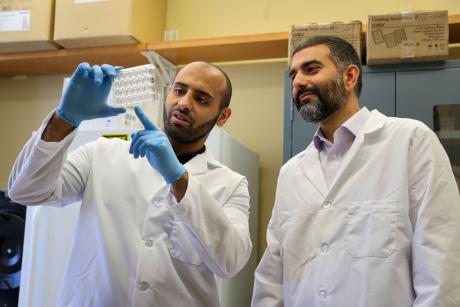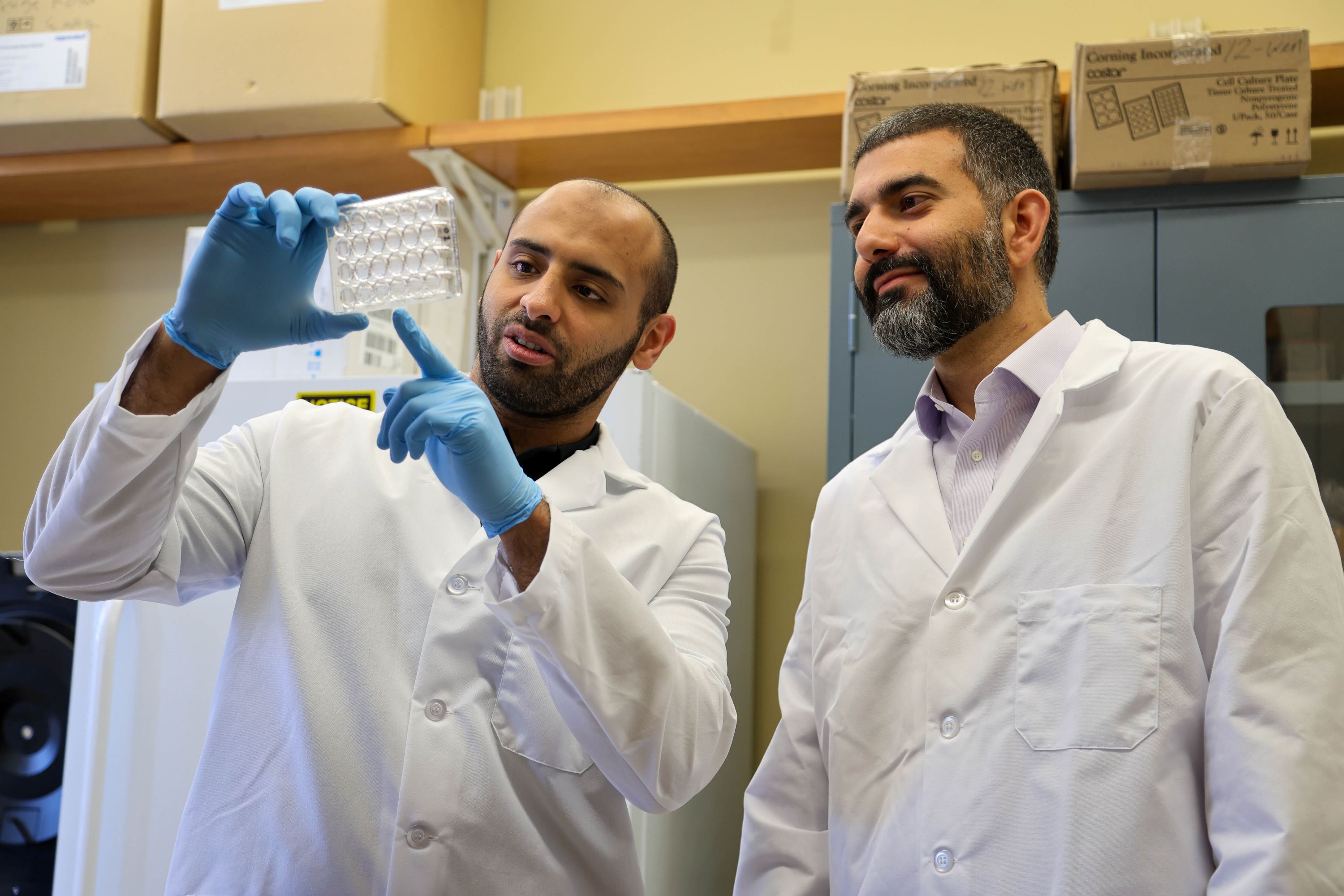Mousa Lab IDs monoclonal antibodies effective against 2 PIVs


Human parainfluenza viruses are among the most prevalent and dangerous viruses you may never have heard of.
Four types of PIVs circulate worldwide each year, and although infections occur in people of all ages, PIVs primarily cause severe respiratory disease in infants, young children, the elderly, immunocompromised and those with preexisting respiratory conditions, such as lung transplants or asthma, according to the U.S. Centers for Disease Control and Prevention. PIV infections can develop into bronchitis and pneumonia, leading to hospitalization and death in high-risk populations.
The risk is particularly great for young children. PIV Type 3 (PIV3) causes 18 million cases of acute lower respiratory infection globally each year, leading to 700,000 hospital admissions and 34,000 deaths in children younger than 5, according to research published in peer-reviewed virology journals – including the Journal of Clinical Virology, Virology Journal and the Pediatric Infectious Disease Journal – as well as data compiled by the CDC. It is the second leading cause of bronchitis and pneumonia in children, right behind respiratory syncytial virus, and it typically affects young children during their first two years of life. Research has shown that infection can recur throughout the child’s life.
Currently, there is no vaccine and no monoclonal treatment.
Associate Professor Jarrod Mousa, Ph.D., and his team in the FSU College of Medicine’s Department of Biomedical Sciences are about to change that situation. They recently published an article in the journal Nature Communications that identified a couple of monoclonal antibodies that are effective against two of the four PIVs.
“One of the antibodies was particularly effective against Type 3, but we showed it was also effective against Type 1,” Mousa said. “So a single monoclonal antibody can combat two different but related viruses.”
Florida State University has staked a claim to the discovery by filing for a provisional patent in Mousa’s name, giving the team time to do more testing and prepare an official patent application.
Parainfluenza viruses are members of Paramyxoviridae, a family of single-stranded RNA viruses known to cause different types of infections in vertebrates. Examples of these infections in humans include measles, mumps, parainfluenza and RSV. Measles and mumps vaccines have been around for decades; a vaccine to protect against RSV has been available since 2023.
Prior to the COVID-19 pandemic, PIV3 was the strain detected in 60% of children who presented with PIV infection. During the pandemic, that figure rose to 99%, Mousa said, evidence of the pervasiveness and increased risk for vulnerable populations – and the need for both prevention and treatment.
“Older people who get a severe infection can lose years of good life,” Mousa said. “They may never quite recover to the point where they were before.”
Mousa’s team studied how the human body reacts to these viruses. Antibodies were isolated from humans who previously had exposure to parainfluenza viruses – “which is basically all of us,” he said – and tested in animal models. They were basically able to reduce the virus’ ability to replicate.
“We want to take our best candidate antibody and optimize it to make it more potent and hope to progress to clinical trials,” Mousa said. “Now that we see how the virus responds to this antibody, we also want to look at how to design a vaccine against it.”
The research was funded by a $682,000 grant from the National Institute of Allergy and Infectious Diseases, a part of the National Institutes of Health.
“We had applied for five-year grant and were just shy of getting it, but they gave us a one-year grant to do a little more work, and it paid off,” Mousa said.
Professor Richard Nowakowski, Ph.D., chair of the Department of Biomedical Sciences, said, “The work in the Mousa lab is groundbreaking, developing new antibodies and antibody targets that provide, for the first time, a route to a therapy for these infections. This work highlights the importance of basic science investigations of viral infection mechanisms.
“The parainfluenza viruses affect the vulnerable – children, the elderly and the immunocompromised, which alone comprise about 4% of the American population.”
Mousa earned a B.S. in Chemistry and a B.A. in English from the University of North Florida in 2010 and a Ph.D. in Chemistry from the University of Florida in 2015, followed by two years as a post-doctoral fellow at the Vanderbilt University Vaccine Center. In 2017, he moved to the University of Georgia, where he was doing similar research at the College of Veterinary Medicine. Mousa joined the FSU College of Medicine faculty in December 2023.
One of his UGA colleagues, Mohamed Elbehairy, is now one of four post-doctoral fellows in the Mousa lab. Four graduate students, two undergraduate students and three research technicians comprise the rest of the team.
For Mousa, one of the takeaways of this research is raising awareness.
“We want to raise awareness of the pathogen, and we also want to raise awareness about the type of research our lab is doing and other people at the university are doing.”
Contact Audrey Post at audrey.post@med.fsu.edu
Photo captions:
Spotlight photo on Home page: Associate Professor Jarrod Mousa, Ph.D., in his lab in the Department of Biomedical Sciences.
Photo top right: Mousa, right, and Mohamed Elbehairy, a post-doctoral scholar, work in the Mousa Lab.
Photos by Eduardo Miyar of the College of Medicine's Creative Services team.

